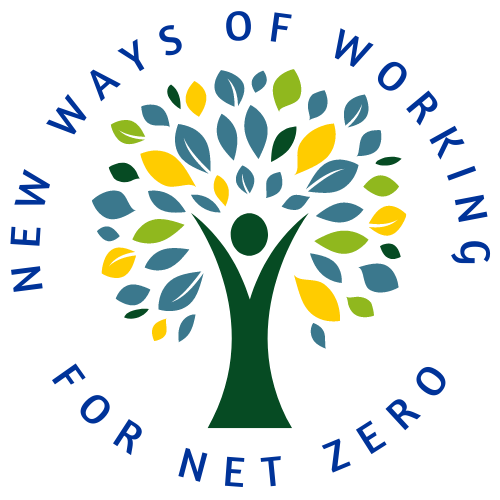Laurent Taskin
Professor of Human Management at the Louvain School of Management (UCLouvain); Director of the Labor-H, the UCLouvain Chair in Human Management and New Forms of Organisation; Visiting Professor at the Université Saint-Louis Brussels and at the Université Paris-Dauphine; Board Member of the Association francophone de GRH (AGRH)
Interview conducted on 15 July 2022
"Back in 2008, a study by Canadian researcher Corinne Gendron (UQAM) laid the foundations for the implications of sustainable development from the HRM perspective. Since then, a whole stream of research, under the name of Sustainable HRM, has been gaining momentum, which explores the implications of the Sustainable Development Goals and the way in which human resources management can embrace them. Several branches can be identified. … “
The interview:
What does the research say about the role that HRM has/can have in sustainable development, and more specifically in reducing carbon emissions?
LAURENT TASKIN
"Back in 2008, a study by Canadian researcher Corinne Gendron (UQAM) laid the foundations for the implications of sustainable development from the HRM perspective. Since then, a whole stream of research, under the name of Sustainable HRM, has been gaining momentum, which explores the implications of the Sustainable Development Goals and the way in which human resources management can embrace them. Several branches can be identified. Firstly, Socially Responsible HRM aims to direct HRM towards longer-term approaches, with the idea that we are not managing resources, but investing in people, and that we need to focus on practices that are not only economically adequate, but also socially adequate. Secondly, Green HRM focuses on environmental aspects: for example, what initiatives would help educate workers to adopt environmentally-friendly behaviours? Thirdly, but perhaps less perennial, is the Triple Bottom-Line type of HRM, which aims to meet social, environmental and economic objectives at the same time. Finally, a fourth emerging branch seems very interesting to me: the Common Good HRM, which introduces common good values, a humanistic approach, into the company's objectives. It emphasises the importance of collective interests rather than just those of the firm and individuals. Our work on Human Management, which constitutes an alternative to the instrumental and financialised model that dominates corporate management today, proposes a concrete approach to Sustainable HRM and Common Good HRM.”
What are the main issues in Sustainable HRM?
LAURENT TASKIN
"There are six of them. First, the identification of the tensions that will emerge when it comes to pursuing both economic performance and social and environmental performance objectives, in both short-term logics - which characterise organisations today - and longer-term logics - in which the notion of sustainability is anchored. Second, the need to consider workers in terms of their capabilities - skills, talents, etc. - with a perspective of long-term performance. Third: the analysis of the positive and negative impacts of certain HR practices and activities and the identification of how to compensate the latter with the former. Fourth: paying attention to everything related to the development of people, and their well-being and quality of life at work. Fifth: establish and promote a clear line of ethics and values in terms of sustainable HRM: what is the commitment, the direction we are taking? Finally, the development of objectives and indicators to promote real change in society. “
There is a widespread idea that remote work is "better" for the environment. To what extent is this validated (or not)?
LAURENT TASKIN
"This idea is not really scientifically validated. In fact, there is just as much research showing that this would be the case as there is research demonstrating the opposite. The basic reasoning is as follows: if you stay at home to work, you avoid a trip from home to work and vice-versa. All other things being equal, this would be beneficial. But then: in other ways we know that all things do not stay equal. The company, for example, is not going to stop heating and lighting the workspaces because some employees are working elsewhere, at home or in another space. The company's energy consumption might therefore remain the same. But the energy consumption at the workers' homes will consequently be higher. There is of course a seasonal effect here, which can vary from one country to another – even though heating can be replaced by air conditioning. In addition, several studies show that travel is not eliminated and that there is even a tendency to travel more, such as running a small errand, continuing to drop/pick up the children from the nursery or school, going out for lunch, etc. There would thus be additional travel, but shorter trips. In the end, we are talking about an "uncertain" eco-balance. “
Does the deployment of NWoW offer levers to contribute to the reduction of CO2 emissions? If so, which ones?
" NWoW cover spatio-temporal flexibility practices – remote working, workspace planning, flexible working hours, etc. -, management practices - autonomy, trust, participation, etc. -, as well as work organisation practices - (semi-)autonomous teams, etc. - all in the service of a philosophy aimed at making the company and its operations more democratic. It is rather in flex-work that we will find such levers, by working on the working environments. For example, reorganising workspaces so that they consume less energy. This can be done in several ways, such as the conditions in which equipment is manufactured, the choice of energy supply and lighting regulation, the type of materials used for glazing, the use of thermal insulation, the implementation of heating systems that allow for more targeted use, etc. It then becomes possible to adapt these systems according to activities and uses. This means thinking ahead about how to organise the work and the types of activities to be carried out. It is also important to ensure predictability of remote-work practices to be able to anticipate when people are there or not. This could help to achieve positive impacts in terms of reducing CO2 emissions.”
Does "working in hybrid mode" bring other levers/prospects in this area, compared to a pre-pandemic deployment of NWoW?
LAURENT TASKIN
"No, not particularly. The fact that we have been through the pandemic just makes us think about it more and in more places. The macro effect of these reorganisations could therefore be interesting. But all the issues need to be carefully thought through. For example, what might be beneficial in a company may be much less so at the level of an urban centre - for example, if the latter declines or empties out due to the desertion of its workers... Similarly, not all remote workers are equal: some have a dedicated workspace and some not, for example. The cost of energy proves to be an important variable in the choice of working from home or the office, depending on the mode and duration of travel, for example.”
Are there tools to measure the impact of work organisation on greenhouse gas emissions? How can relevant tools be developed in this area?
LAURENT TASKIN
"Today, we tend to use energy consumption as an indicator, for example by trying to control the origin of the energy consumed. There are measurement tools, but they encounter several difficulties. The first is that the measurement is based on what a site consumes and, often, companies have several sites in very different geographical areas and with very different histories. The second is the need to factor in an entire ecosystem, including workers and suppliers. Bringing them into the equation and having an impact on them is much more complicated. That's why we are planning a new study in which we are going to install sensors that will allow us to measure energy consumption both in companies and at home. “
Can HR influence workers' behaviours – at the professional but maybe also at the personal level - to reduce their impact on the environment?
LAURENT TASKIN
"Awareness raising and education on workplace behaviours based on scientific evidence is one of the main levers available to HRDs. It is in this spirit that companies are putting in place good uses of digital technology or mobility. Informing employees about the environmental cost of their practices is always interesting. It is even better when this awareness-raising, information or training is driven by a strategy, in line with the activities, and/or with the ambitions of the copany to achieve carbon neutrality. This triggers the multiplication of initiatives. “
Conversely, do companies have to learn from their employees to act in this area?
LAURENT TASKIN
"Certainly. It has been shown that good ideas often come from operational staff because they are closest to the real work. And that's where you can really have an impact. However, the challenge is to maintain consistency. If the participatory approach is isolated or appears to be an isolated initiative, without being part of a broader strategy; or if the corporate message is that the environment is important, but that there are only financial performance KPIs, the approach will not be credible. Beware of greenwashing!"








